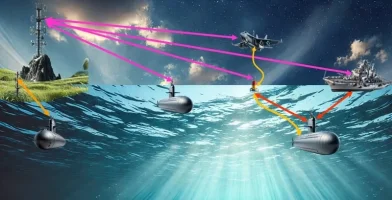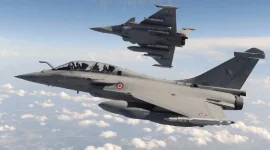- Views: 2K
- Replies: 1
IMAGE CREDIT Manish Prasad of India TV
India's Defence Research and Development Organisation (DRDO) has unveiled a suite of advanced, domestically-produced technologies designed to counter the growing threat of hostile drones.
The new systems include a powerful 10/12 kW laser weapon, a comprehensive anti-drone system known as the D4 Counter Unmanned Aerial System (CUAS), and a highly accurate Electro-Optical Targeting System (EOTS).
This development marks a major achievement in India's goal of self-reliance in defence technology and places it among a select group of nations with sophisticated anti-drone capabilities.
The core of the new hard-kill capability is the 10/12 kW Multi-Channel Laser Directed Energy Weapon (DEW). Developed by DRDO's Centre for High Energy Systems and Sciences (CHESS) in Hyderabad, this system is mounted on a vehicle for mobility. It functions by firing a concentrated beam of light to physically damage a drone's structure or disable its electronic sensors.
A key feature is its multi-channel design, which allows it to engage several targets at once, making it a potent defence against coordinated drone swarm attacks. This technology offers a significant cost advantage over traditional missiles, with the operational cost of firing the laser being roughly equivalent to that of a few litres of fuel.
The laser weapon is part of the broader D4 CUAS, which stands for Drone Detect, Deter, and Destroy. This integrated system provides a multi-layered defence solution.
For detection, it uses a combination of radar and radio frequency (RF) sensors. Once a threat is detected, day-and-night cameras with laser rangefinders are used for visual identification.
The system offers both "soft-kill" options, such as jamming a drone's communication or spoofing its GPS signal, and a "hard-kill" option using the laser DEW. This comprehensive approach, developed by multiple DRDO labs, allows for a flexible response tailored to the specific threat.
Precision is ensured by the Electro-Optical Targeting System (EOTS). This system is equipped with 360-degree infrared and optical sensors, providing continuous and precise tracking of aerial threats in real-time.
By feeding exact location data to the main command and control unit, the EOTS enables the D4 system to accurately aim both its jamming tools and its laser weapon, ensuring effective neutralisation of enemy drones.
To validate its effectiveness, the D4 system was tested against a specialised multicopter target designed to mimic the flight patterns and low radar visibility of real-world threats.
These threats include small drones used by adversaries for cross-border smuggling, espionage, and surprise attacks. The successful trials have confirmed that the D4 system is ready for operational deployment to protect critical military bases, border areas, and vital civilian infrastructure.
The strategic importance of this indigenous system cannot be overstated.
The global proliferation of inexpensive Unmanned Aerial Vehicles (UAVs) has changed the landscape of modern conflict, presenting a serious challenge known as "asymmetric warfare."
The D4 system provides a crucial capability to counter this threat effectively, particularly in complex environments like cities or along borders, where minimising collateral damage is essential.
This 10/12 kW laser is the latest advancement in DRDO's growing directed energy arsenal.
It follows the successful development of a 2 kW laser system, which has been deployed on the Indian Navy's INS Jalashwa, and a more powerful 30 kW laser that was tested in Kurnool on April 13, 2025.
This 30 kW system proved capable of destroying UAVs from a distance of 5 kilometres, placing India in an elite club of nations with high-power laser technology, including the US, China, and Russia.
Looking ahead, DRDO is reportedly working on an ambitious 300 kW laser project, codenamed "Surya," intended to counter supersonic missiles.
In summary, the D4 CUAS represents a holistic and modern approach to aerial defence.
By integrating radar, sensors, jammers, and lasers into a single, modular network, it provides a cost-effective and precise solution to the unique challenges posed by small, manoeuvrable drones.
Its flexible design allows for deployment on land vehicles and naval ships, enhancing the operational readiness of India's armed forces against next-generation threats.




